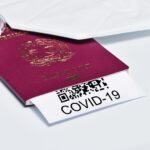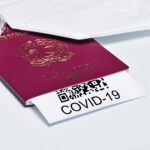For many international students, the Post-Graduation Work Permit (PGWP) is the cornerstone of their plan to transition from studying in Canada to gaining valuable work experience and eventually applying for permanent residence. However, strict eligibility criteria mean that not every graduate qualifies for this coveted open work permit. Facing PGWP ineligibility can feel like a devastating setback, but it is crucial to understand that this is not the end of the road. Canada’s immigration system offers several other robust work permit avenues that can keep your professional and permanent residency aspirations alive. This guide provides a comprehensive overview of these powerful PGWP alternatives, offering clarity and direction for graduates navigating their next steps.
Table of Contents
- Deciphering PGWP Ineligibility: Common Hurdles for International GraduatesThe Foundational Alternative: Mastering the Employer-Specific Work Permit and LMIA ProcessStrategic Advantage: Capitalizing on LMIA-Exempt Work PermitsThe Critical Lifeline: Securing a Bridging Open Work Permit (BOWP) on Your Path to PRFrequently Asked Questions
Deciphering PGWP Ineligibility: Common Hurdles for International Graduates
Understanding why a PGWP application might be refused is the first step in formulating an effective alternative strategy. The PGWP program has stringent requirements, and any deviation can lead to ineligibility. One of the most common reasons is attending a non-designated learning institution (non-DLI). Only graduates of DLIs are eligible for a PGWP. Furthermore, the program of study itself must meet specific criteria; for instance, programs that consist primarily of English or French as a second language instruction do not qualify. The duration and intensity of the study are also critical factors. Students must maintain full-time status throughout their program, with very few exceptions, such as a final part-time semester. A graduate who studied part-time for any other period will likely be found ineligible. Similarly, taking an unauthorized leave from studies can jeopardize PGWP eligibility. The length of the program also dictates the length of the PGWP, and programs shorter than eight months are not eligible at all. Finally, distance learning has become a significant consideration; while some flexibility was introduced during the COVID-19 pandemic, the general rule requires a substantial portion of the program to be completed in-person, in Canada. Failing to meet any of these conditions can unfortunately close the door on the PGWP pathway.
The Foundational Alternative: Mastering the Employer-Specific Work Permit and LMIA Process
When the PGWP is not an option, the most common and foundational alternative is an employer-specific work permit supported by a Labour Market Impact Assessment (LMIA). Unlike the PGWP, which is an open work permit allowing a graduate to work for nearly any employer, an employer-specific permit ties the individual to a single employer in a specific role and location. The cornerstone of this process is the LMIA, a document issued by Employment and Social Development Canada (ESDC). The purpose of an LMIA is to ensure that hiring a foreign worker will not have a negative impact on the Canadian labour market. To obtain a positive LMIA, an employer must typically demonstrate that they made significant efforts to hire a Canadian citizen or permanent resident for the position but were unsuccessful. This involves advertising the job extensively and proving that no qualified local candidates were available. While the process can be demanding for the employer, securing a job offer backed by a positive LMIA provides a clear and direct route to a work permit. For the international graduate, this pathway requires proactive job searching and finding an employer willing to navigate the LMIA process. Successfully obtaining an LMIA-backed work permit not only provides valuable Canadian work experience but can also award additional points in the Express Entry system, significantly boosting one’s chances for permanent residence.
Strategic Advantage: Capitalizing on LMIA-Exempt Work Permits
Beyond the standard LMIA process, Canada has established numerous LMIA-exempt work permit categories, often through international agreements or as part of strategic initiatives to attract top talent. These pathways can be significantly faster and less burdensome for employers, making them a highly attractive PGWP alternative for eligible graduates. These exemptions are granted because the work is considered to provide a significant social, cultural, or economic benefit to Canada, or because it falls under a reciprocal employment agreement. For instance, international trade agreements like the Canada-United States-Mexico Agreement (CUSMA), the Comprehensive Economic and Trade Agreement (CETA), and the Comprehensive and Progressive Agreement for Trans-Pacific Partnership (CPTPP) contain provisions for professionals and technicians from member countries to work in Canada without an LMIA. Graduates holding citizenship from a partner country and possessing the required professional credentials could find a direct route to employment. Another prominent LMIA-exempt program is the Global Talent Stream, which facilitates expedited work permits for individuals in high-demand tech occupations. While still requiring an employer to apply, the processing standards are much faster. Exploring these strategic pathways requires a careful review of one’s nationality, profession, and the specific requirements of each program, but they represent a powerful set of tools for circumventing the complexities of the LMIA process.
Key LMIA-Exempt Categories to Explore:
- International Agreements: As mentioned, CUSMA (for citizens of the US and Mexico), CETA (for citizens of the EU), and other Free Trade Agreements (FTAs) create opportunities for professionals, traders, and investors. Eligibility is tied to specific professions listed within the agreement.Intra-Company Transferees: For individuals who have worked for a multinational company abroad for at least one year, this option allows them to transfer to a Canadian branch in a senior managerial, executive, or specialized knowledge role.Significant Benefit: This broad category (exemption code C10) can be used for individuals who can demonstrate that their work will bring a unique and significant social, cultural, or economic benefit to Canada. This often applies to entrepreneurs, high-level executives, and renowned artists or athletes.Reciprocal Employment: Programs like the International Experience Canada (IEC) offer work permits to youth from countries with a reciprocal agreement, allowing them to gain Canadian work experience.
The Critical Lifeline: Securing a Bridging Open Work Permit (BOWP) on Your Path to PR
For graduates who are already well on their way to permanent residence, the Bridging Open Work Permit (BOWP) serves as a critical lifeline. A BOWP is designed for individuals who have a pending application for permanent residence but whose current temporary work permit is nearing its expiry. This permit allows them to continue working in Canada legally while they await a final decision on their PR application. It effectively ‘bridges’ the gap between the expiry of their status and the issuance of their PR status. To be eligible for a BOWP, an applicant must have already submitted a complete application for permanent residence under an eligible economic class, such as the Federal Skilled Worker Program, Canadian Experience Class, Federal Skilled Trades Program, or a Provincial Nominee Program (PNP). They must also be in Canada and hold a valid work permit that is set to expire within four months. The BOWP is an open work permit, providing the same flexibility as a PGWP by allowing the holder to work for almost any employer in Canada. For an international graduate who was able to gain some work experience on a different type of permit (e.g., an LMIA-based permit) and has since qualified for and applied for PR, the BOWP is an indispensable tool to maintain their livelihood and status in Canada during the final leg of their immigration journey.
Frequently Asked Questions
What is a Labour Market Impact Assessment (LMIA)?
A Labour Market Impact Assessment (LMIA) is a document from Employment and Social Development Canada (ESDC) that an employer may need to obtain before hiring a foreign worker. It verifies that there is a need for a foreign worker to fill the job and that no Canadian worker is available to do it. A positive LMIA is a foundational requirement for many employer-specific work permits.
How does an employer-specific work permit differ from a PGWP?
A PGWP is an open work permit, which allows a graduate to work for nearly any employer anywhere in Canada. In contrast, an employer-specific work permit, such as one based on an LMIA, restricts the holder to working for a specific employer, in a designated occupation, and at a particular location as detailed on the permit.
What are LMIA-exempt work permits?
LMIA-exempt work permits are special categories that do not require an employer to go through the LMIA process. These exemptions are typically based on international agreements (like CUSMA or CETA), reciprocal youth exchange programs, or situations where the work provides a significant benefit to Canada. They offer a faster and more streamlined process for both the employer and the applicant.
Who is eligible for a Bridging Open Work Permit (BOWP)?
Eligibility for a BOWP is primarily for individuals who are already in Canada, hold a valid work permit that is expiring within four months, and have submitted a complete application for permanent residence under an eligible economic immigration program. The BOWP allows them to continue working while they await a final decision on their PR application.
Talk to us to find out more. ->The content above is not intended to provide legal advice or opinions of any kind and may not be used for professional or commercial purposes.







